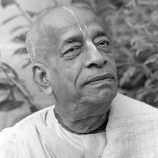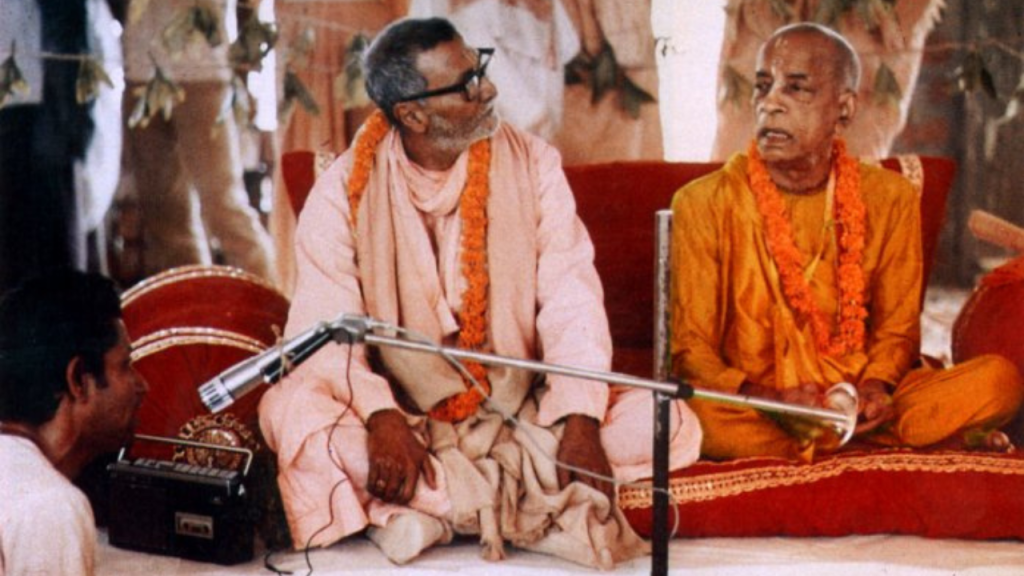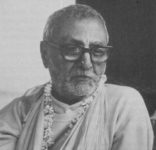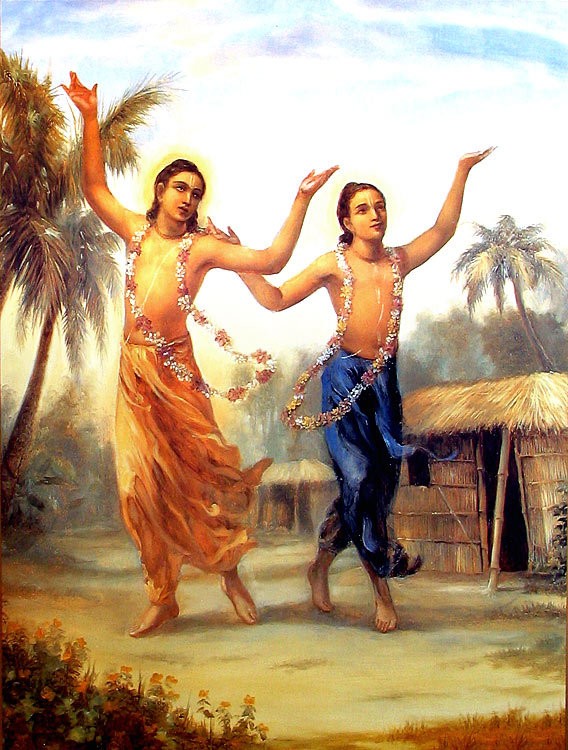🪷 All Glory to Sri Guru and Gauranga 🪷
Community Programs


Kindly consider joining our WhatsApp group to receive the Zoom links and further details for devotional programs cultivating spiritual culture, including online Bhagavat-katha led by Sripad Bhakti Madhava Puri Maharaja. Click here for details about our monthly prasadam (sanctified vegetarian meal) distribution and kirtan (ecstatic mantra meditation).
What is Spiritual Culture? || Service to the Whole Pervades All Levels of Existence

Anything that exists has two aspects: being-for-self and being-for-other. In biological systems, the being-for-other characterizes the entire system and permeates each part of it. The cells in a heart serve to maintain proper organ function so that the heart can maintain its specific function within the whole organism. When the organism is healthy and all organs function correctly, the cells within those organs are also maintained. Further, the proper function of individual parts indirectly promotes the well-being of the other parts through direct service to the whole. When the heart and its cells are healthy, the stomach and its cells are too, and vice versa. However, if free radicals within the cell disrupt the cell’s normal function, where its being-for-self becomes an obstacle for its being-for-other, then the function of the heart may be compromised and the whole organism could become sick. This potentially compromises other parts as well, which perpetuates illness of the whole. The successful function of each individual part within the whole biological system is mutually interdependent on the proper function of the other parts, which simultaneously maintain and depend on the whole. This was how Immanuel Kant distinguished between mechanical wholes and organic wholes in his Critique of Judgement (1790), which has been embraced by contemporary dynamical systems thinkers. There is no isolated existence for the parts of living beings. The tendency of mechanistic approaches to think in terms of static being only creates caricatures of living entities. Thus, a more accurate term for these parts is participants. The organism both maintains and depends on these participants, and their development as a whole is a dynamic process of becoming.
Aristotle taught that “we do not have knowledge of a thing until we have grasped its why, that is to say, its cause” (Physics 194 b17–20). Out of his four aspects of cause, the formal and final aspects consider origination and purpose (teleology) or that for the sake of which something exists. The sake for which the heart exists is to perpetuate the life of an organism, but for what sake does the organism exist? Etymologically, “organism” comes from the Greek “órganon,” meaning instrument. This demonstrates that purposiveness is fundamental to the concept of organisms, but what is that purpose? For what sake do humans exist? These are deep and important existential questions. Throughout history, many cultures and civilizations have considered these questions religious or spiritual, and have turned to such systems for guidance. Some say that while modern science addresses the how of life, religion addresses the why. The common theme in most religions and spiritual traditions since time immemorial is to seek self-knowledge, i.e. clarity on where we came from and why we exist. Such inquiry takes the form of personalist theism through both the faith and reason of sincere seekers.


The sincere seeker recognizes the necessity of faith in all aspects of life, even for the most devout atheist. Taking a single step on the ground without fearing that a sinkhole may open beneath our feet is an act of faith, whether we recognize it or not, what to speak of more complicated daily activities. Truth seekers also highly respect revelation as the only feasible method for a finite entity to acquire knowledge of the infinite (where revelation includes both sacred scripture and the necessary development of pure reason). One form of reasoning for personalist theism follows from the empirically observed law of biogenesis, that life and matter come from life, elaborated here. An example of the necessary development of pure reason — where a finite thinker does not project their infinitesimal understanding onto the infinite but rather recognizes themself as a moment of the Absolute Idea that transcends and subsumes or sublates all finitude — is offered throughout G.W.F. Hegel’s Encyclopedia of the Philosophical Sciences. The Bhagavat Vedanta philosophy of ancient India, which emphasizes the need for Sadhu-Guru-Shastra (association with saintly persons, surrender to the bonafide spiritual master, and unadulterated knowledge of sacred scripture) also offers a nonsectarian conception of the Absolute Truth.

The Bhagavat teaches that the purest form of religion and spirituality is concerned with cultivating a loving relationship of devotional service to the Supreme Personality of Godhead uninhibited by selfish provincial interest. This conception teaches that the Supreme Person is the Organic Whole of which all other lifeforms are a part (Sri Isopanisad Invocation: om purnam adah purnam idam) and that for the sake of which everything exists is to please the Absolute, similar to how the purpose of cells throughout the body is to serve the greater organism. Pleasing the Supreme Lord, Who is the Absolute center, is in the best interest of the participants (living entities), as this is how they receive the highest degree of fulfillment. This can be metaphorically likened to feeding the stomach (the center) to nourish the entire body (the whole) or watering roots (the functional center) to nurture the whole plant (B.R. Sridhara, Home Comfort, 1992)
This path of cultivating pure loving devotional service in relation to the Absolute is known as Bhakti-yoga. This conclusion (Vedanta) of Vedic wisdom is presented in the Bhagavat Purana, heralded as the ripened fruit of the tree of Vedic knowledge. Bhakti is a nonsectarian approach to spiritual life. Many people think of the whole Vedic tradition of India to be a ritualistic, polythesitic religion they call Hinduism; few understand the profound philosophical truths it represents. We’re trying to reclaim and present that core philosophical foundation in a modern way.

The image above shows Sri Krishna Chaitanya Mahaprabhu and one of His dearmost associates, Nityananda Prabhu. Mahaprabhu inaugurated kirtan in 15th-16th century West Bengal, India

🪷 Jaya Om Vishnupad Paramahamsa Sripad Bhakti Madhava Puri Maharaja 🪷
